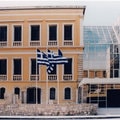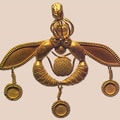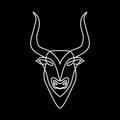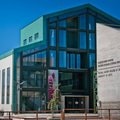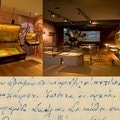Activities
Take full advantage of your stay in Heraklion
 Historical Museum of Crete
Historical Museum of Crete
0.15 km away
Founded in 1953 by the Society of Cretan Historical Studies (S.C.H.S.), the Historical Museum of Crete (H.M.C.) presents a comprehensive view of Cretan history from early Christian (more)
- € 5
 Archeological Museum of Crete
Archeological Museum of Crete
0.7 km away
The Heraklion Archaeological Museum is regarded as one of Europe's most important museums. The present building was constructed between 1933 and 1937 to plans by P. Karantinos, on (more)
 Experience Creta
Experience Creta
1.0 km away
Is it possible to tell a story of a thousand years ago using the latest technology? Is it possible to combine something purely timeless with something utterly pioneering?
The answer (more)
- about 1 hour
- € 12
 Natural History Museum
Natural History Museum
0.5 km away
Operating within the wider University of Crete framework, the Natural History Museum of Crete fulfils all the roles demanded of a comprehensive, modern museum by:
Keeping and (more)
 Nikos Kazantzakis Museum
Nikos Kazantzakis Museum
17.0 km away
The Nikos Kazantzakis Museum was founded by Yiorgos Anemoyiannis in 1983. The founder's intention was to create a museum capable of housing the numerous significant exhibits relating (more)
 The Battle of Crete and National Resistance Museum
The Battle of Crete and National Resistance Museum
0.8 km away
The Museum of the Battle of Crete and National Resistance (1941-1945) was founded by the Municipality of Heraklion in May 1994.
The museum's aim is to collect, preserve and exhibit (more)
